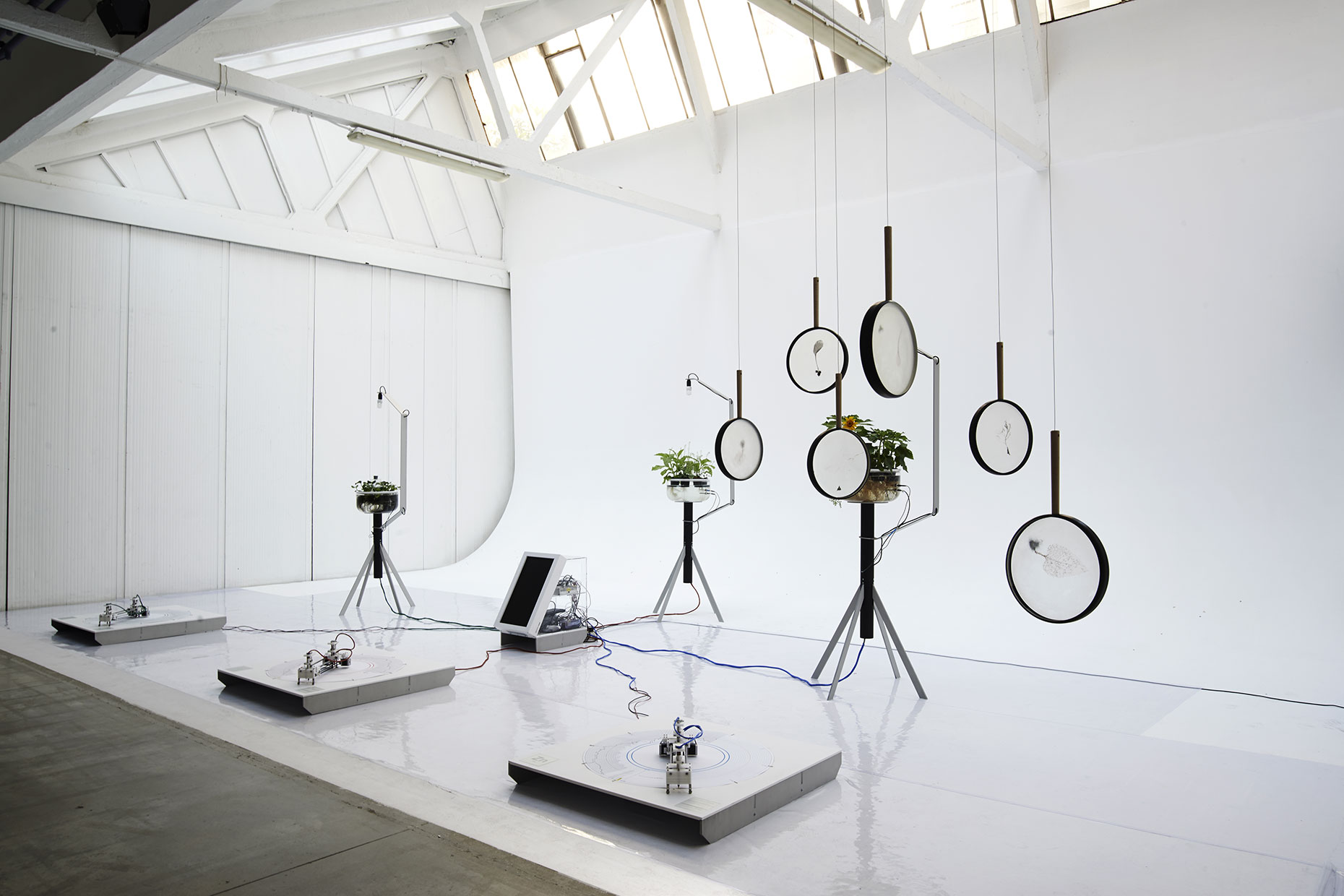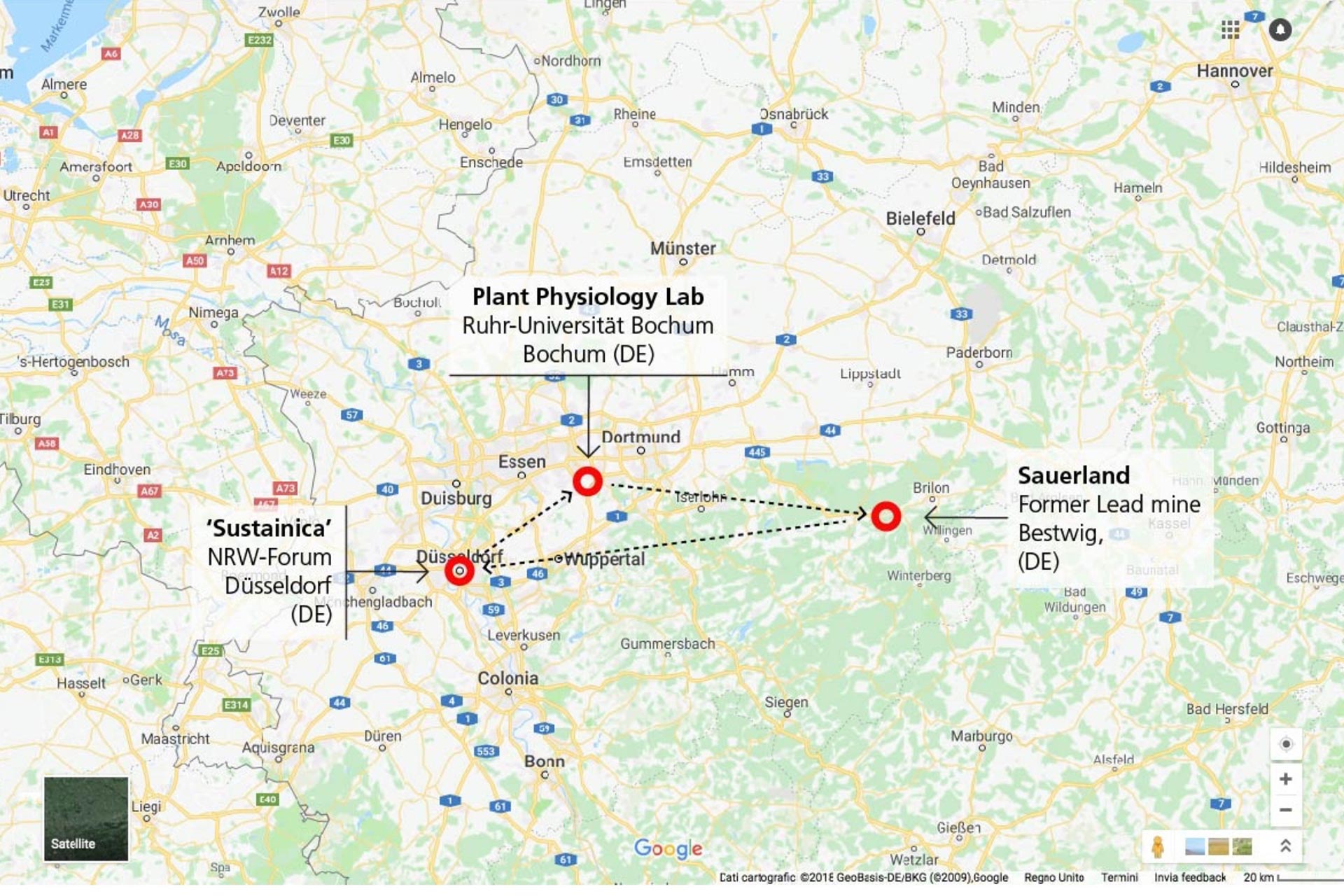 F.001
F.001
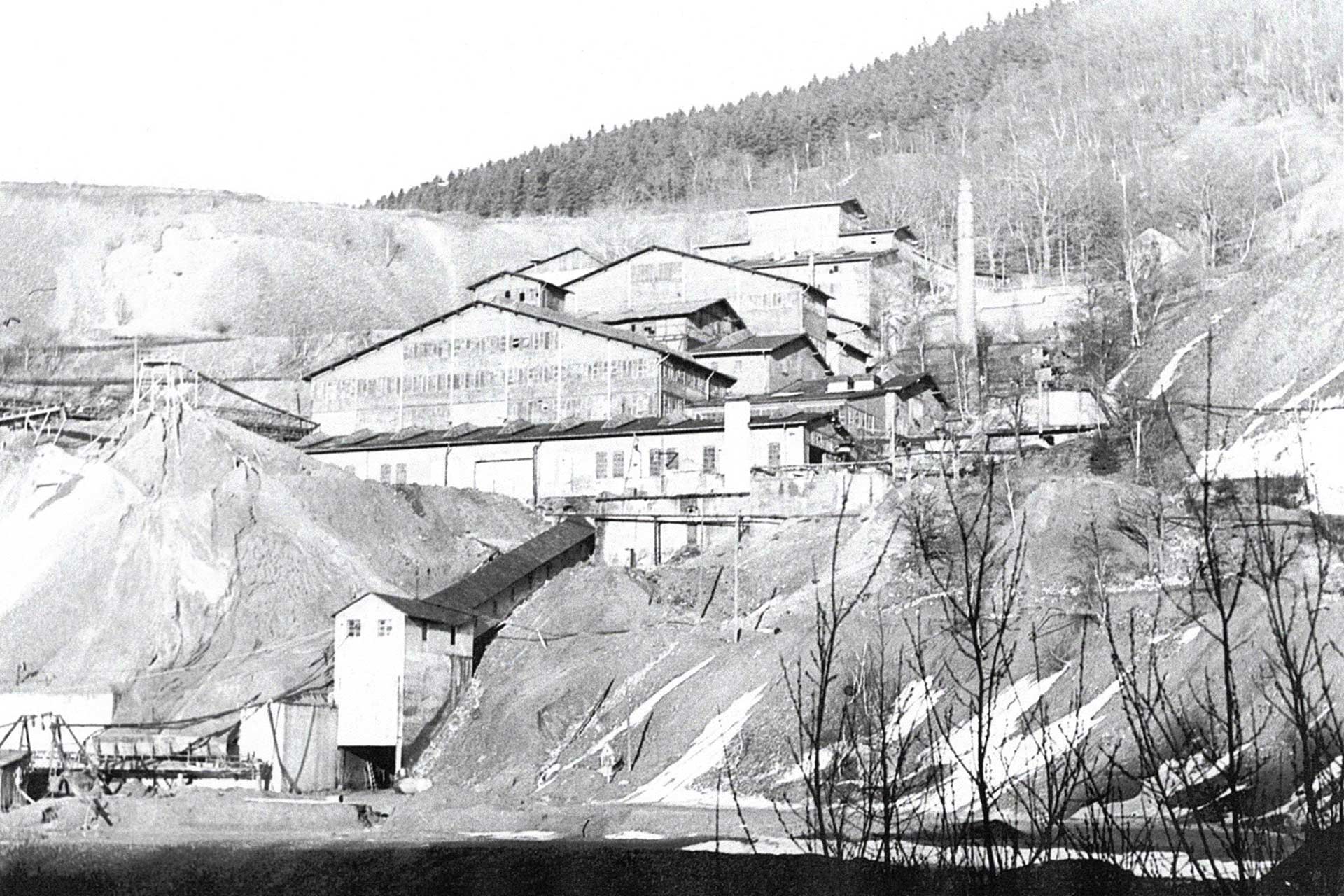 F.005
F.005
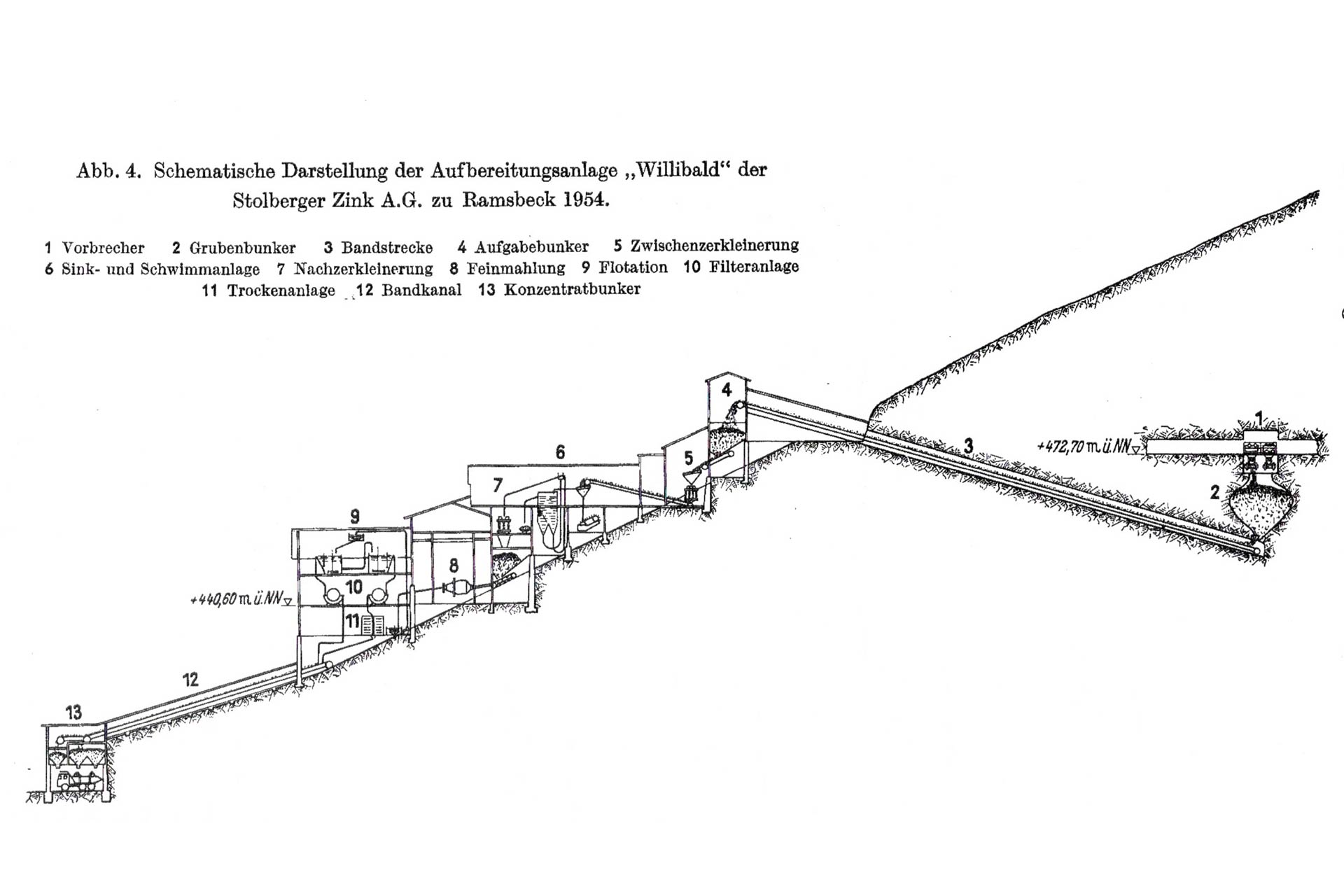 F.003
F.003
 F.004
F.004
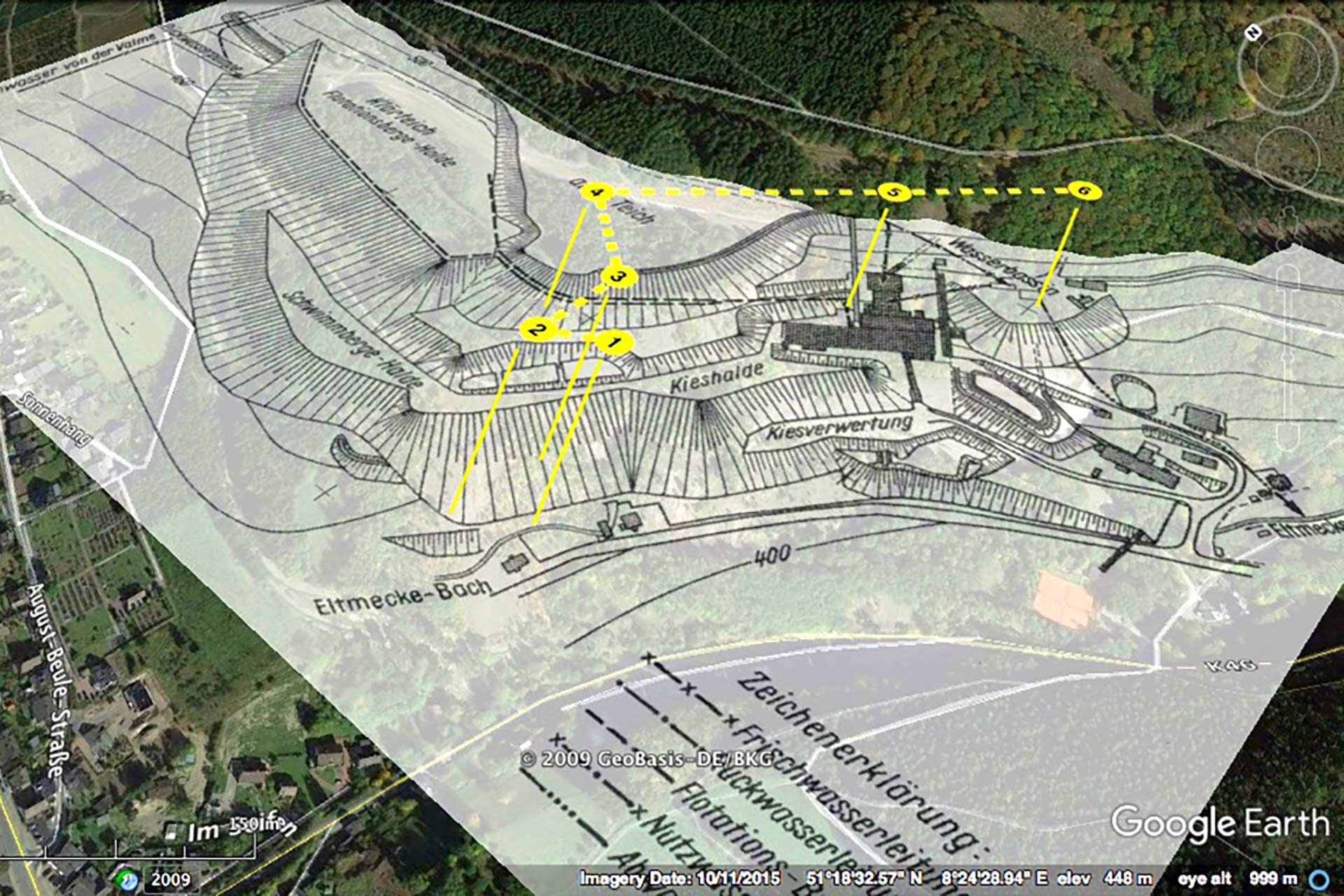 F.002
F.002
 F.010
F.010
 F.011
F.011
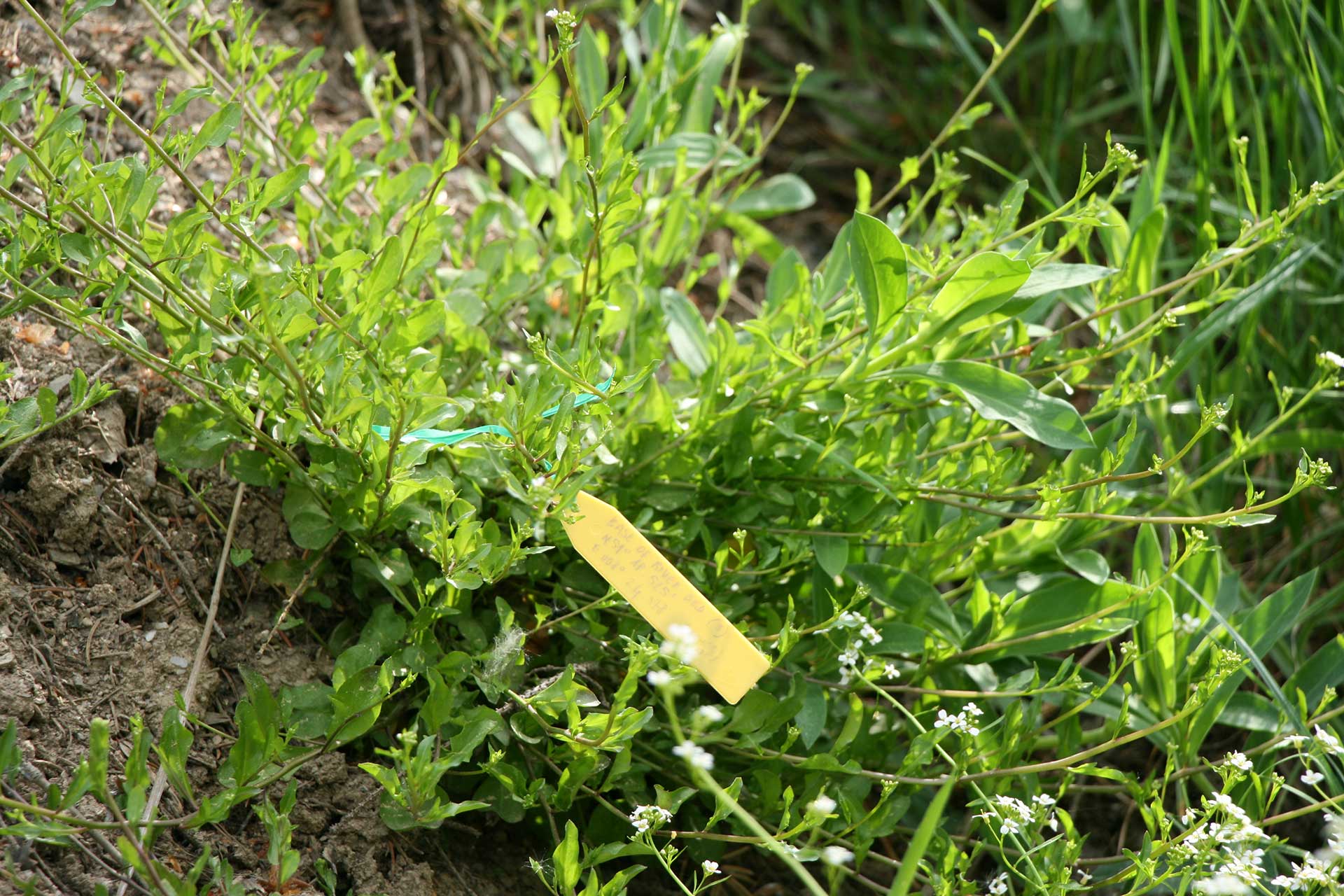 F.009
F.009
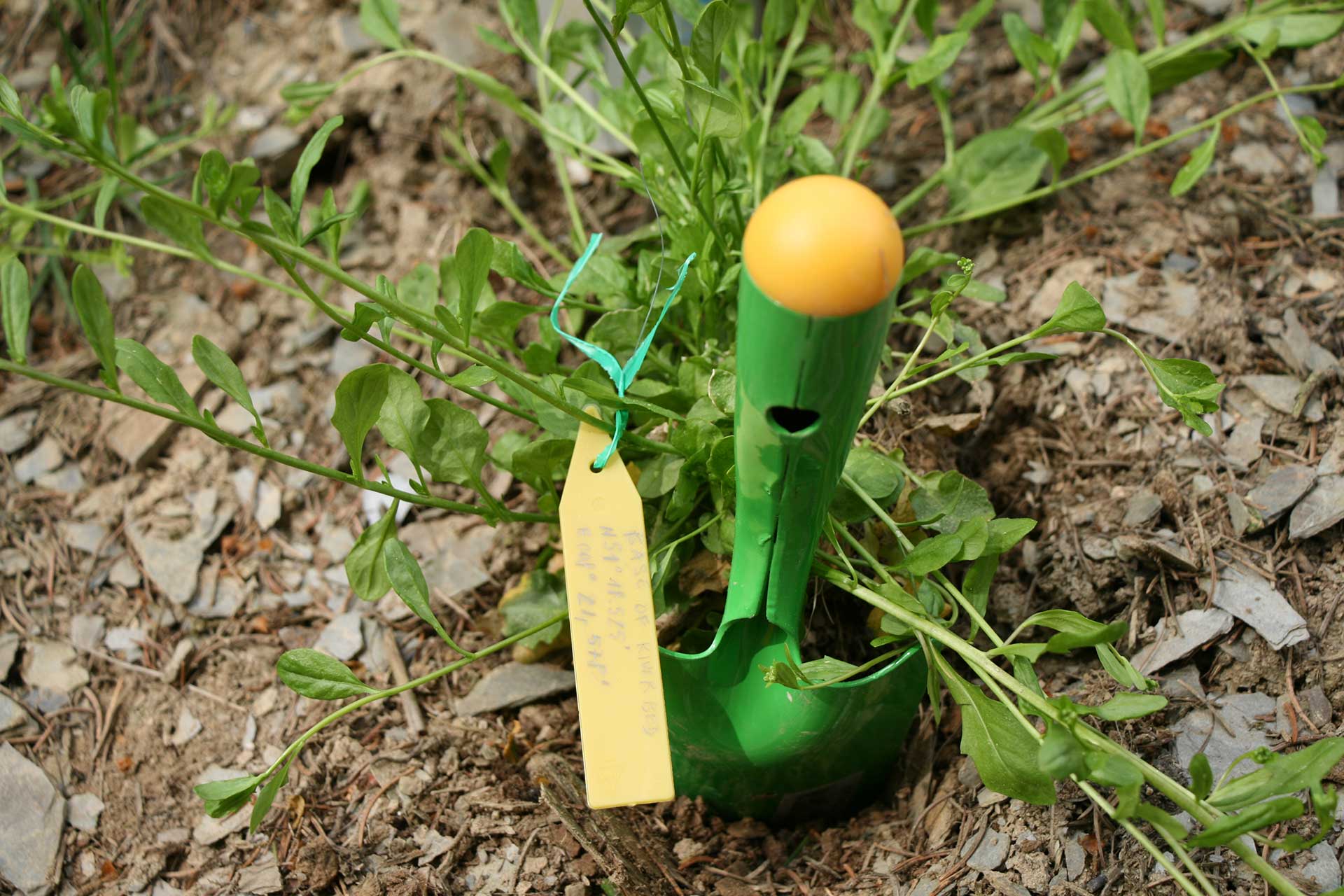 F.008
F.008
 F.012
F.012
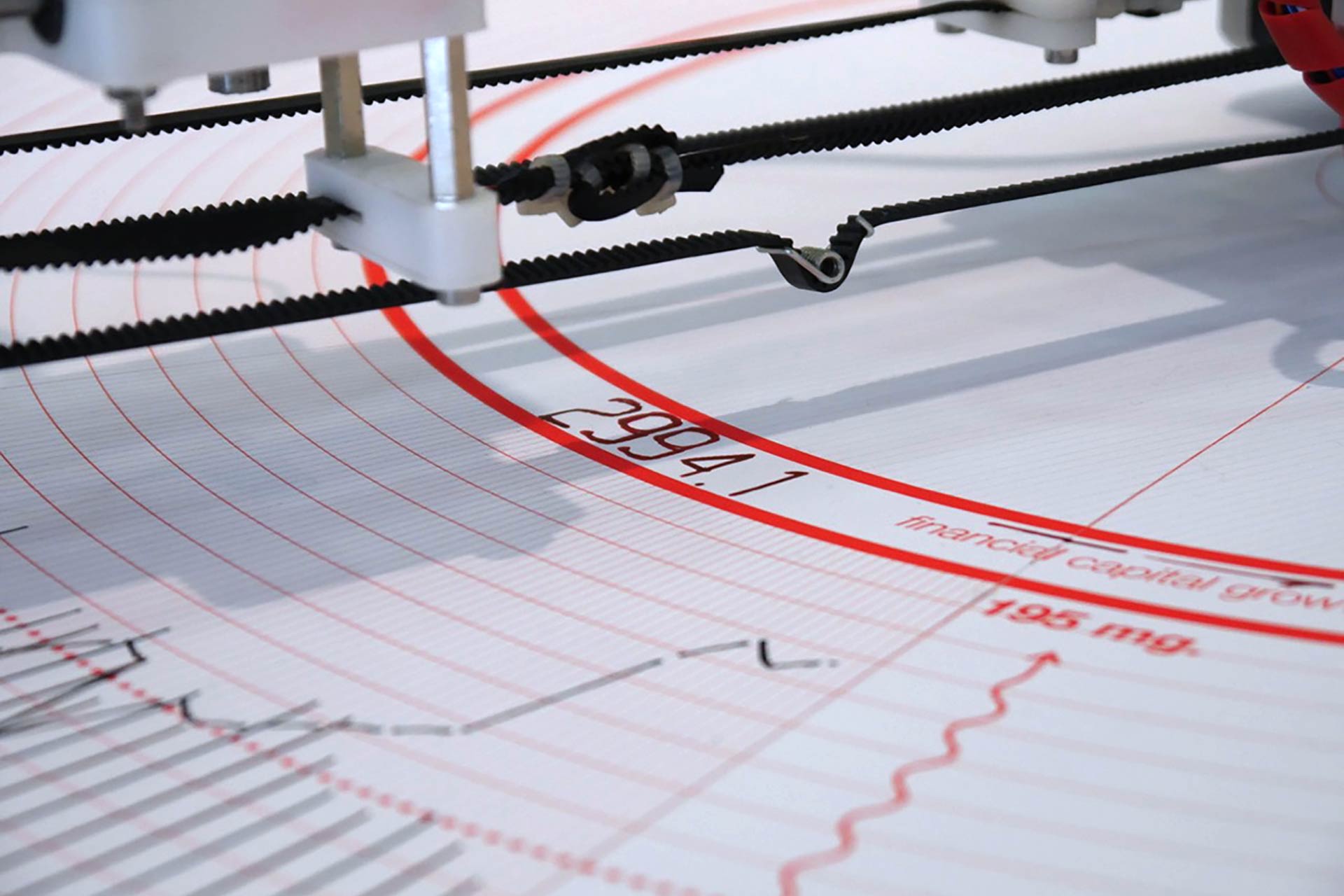 F.013
F.013
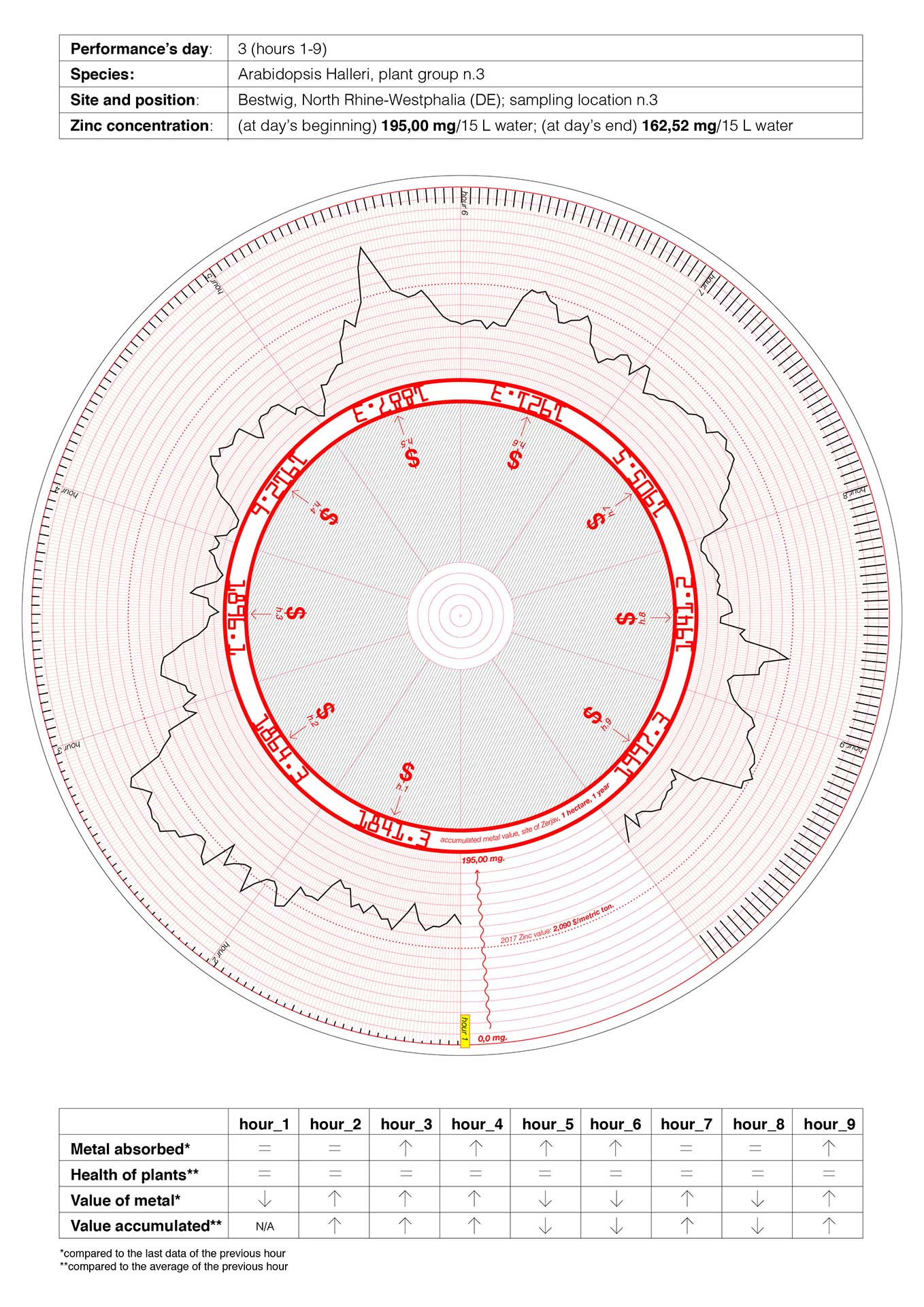 F.016
F.016
 F.015
F.015
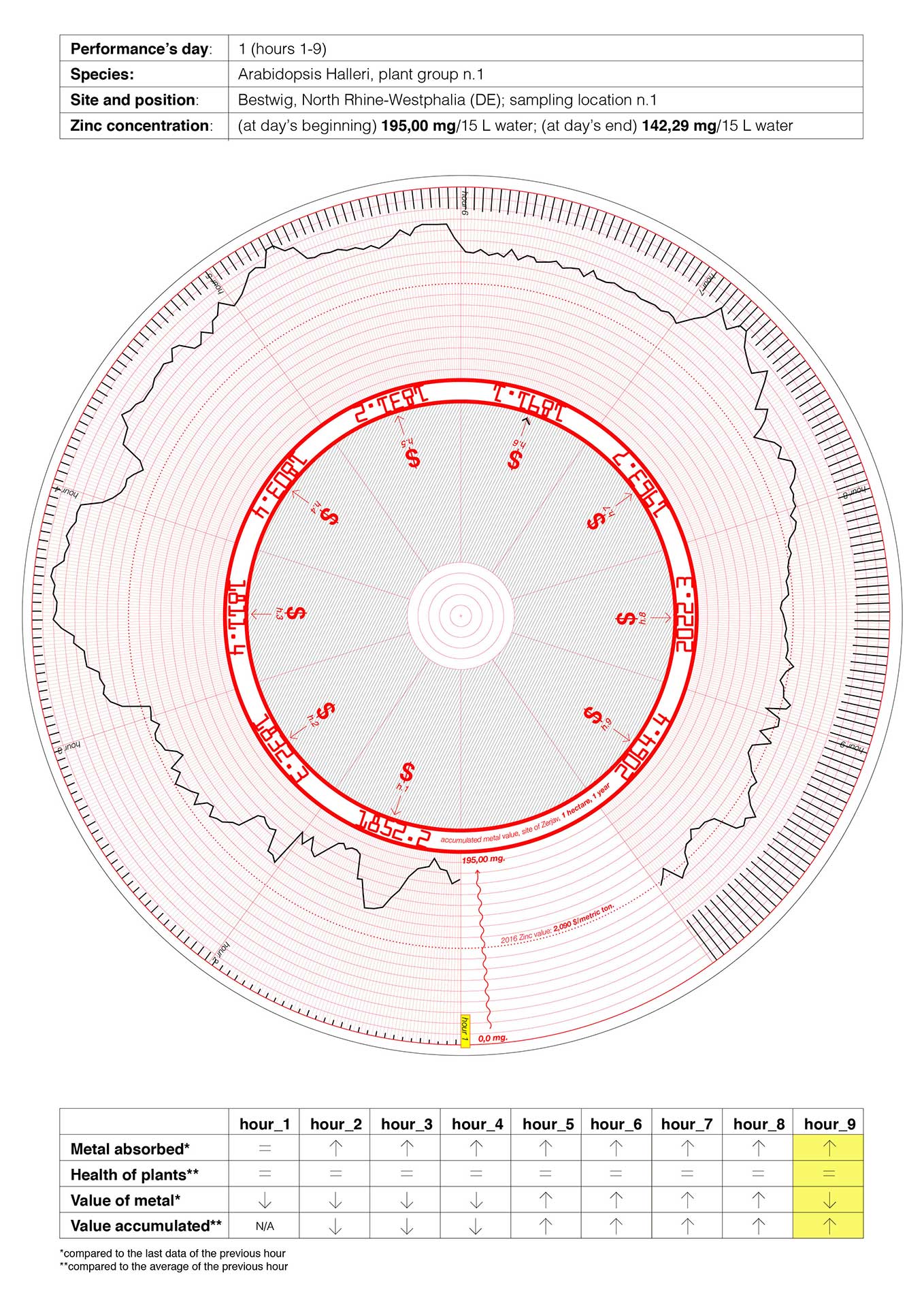 F.014
F.014
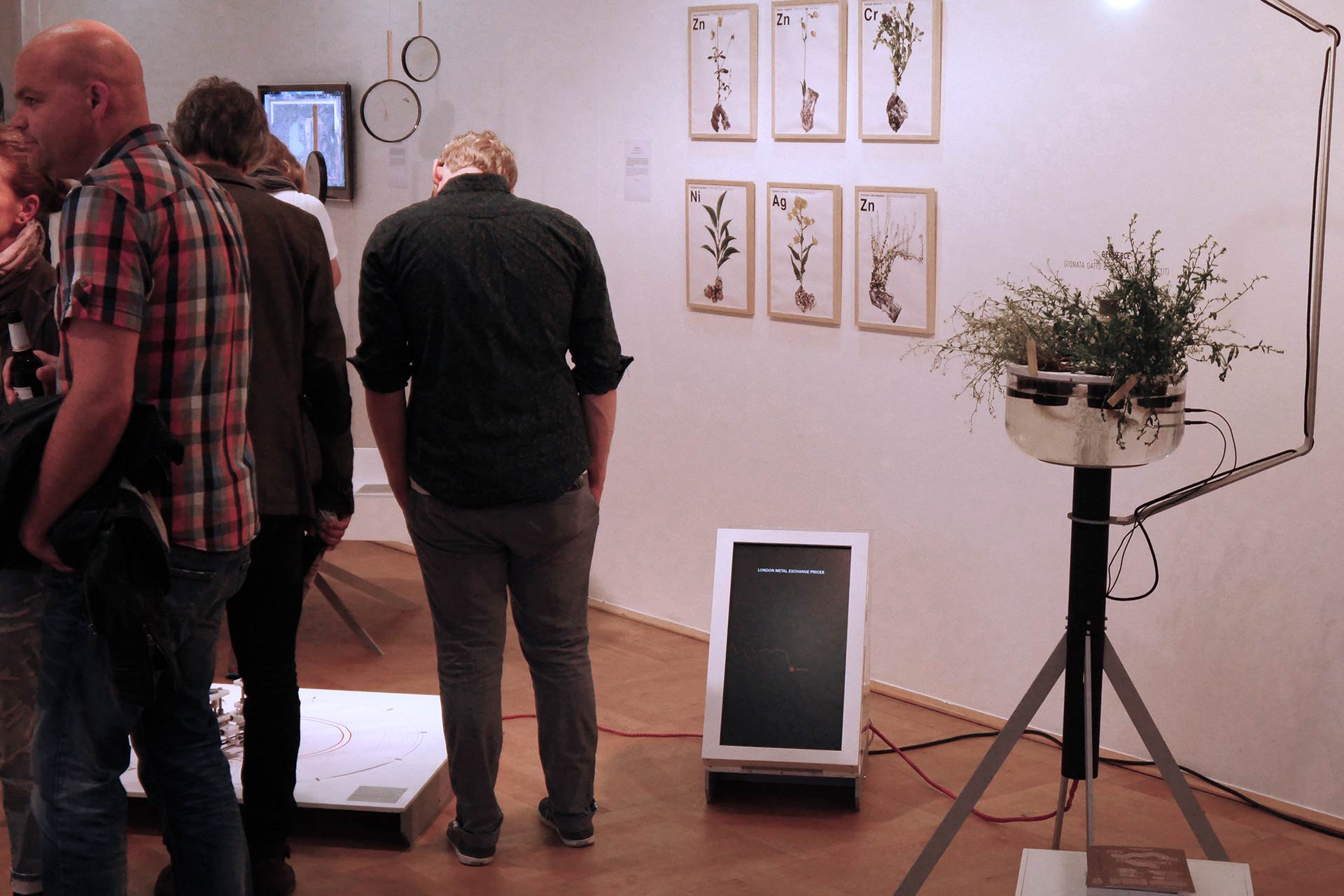 F.017
F.017
R.002
Performing Arabidobsis Halleri
Words
Prelude
Sustainica is a newly launched event at NRW-Forum Düsseldorf focused on sustainability in art, mobility, food, and technology. The inaugural edition served as a curatorial experiment, bringing together diverse disciplines and audiences. As part of the exhibit The Soil Movement, curated by Dutch Art and Deisgn label Transnatural, Geomerce was presented to explore alternative ways of transforming damaged soil, exploring resource extraction and circular ecological systems, and looking at design as a situated rather than general practice.
About Arabidobsis Halleri
This study involves the species Arabidopsis halleri, a Zinc hyperaccumulator that belongs to the Brassicaceae family, also tolerant to metals such as Lead and Cadmium. An endemic population could be found on the territory of Bestwig, Sauerland, a hilly region located on the south-eastern part of North Rhine-Westphalia. The village, between 1518 and 1974, was part of the mining area of the Ramsbeck, which hosted a mine for the extraction of Zinc. In 1975 the mine was permanently closed, due to the impoverishment of the ores and value decrease of that metal, however the site can still be visited at those days, as a result of the land forming part of a mining trail. The resilience of the plant in that territory is linked to its situated modus operandi, itself constrained not only to the anthropogenic disturbances within the soil, but also to the climate, the interaction with other species such as animal and insect and the conformation of the plant –whose roots rarely exceed the depth of 20-30 cm. On site, the plant colonized entire areas of the former mine, becoming ubiquitous under certain climate conditions. The population of Bestwig is described as one of the largest found so far: its individuals exceeded in number the 10,000 individuals, spreading across several heaps of Zn and Pb mine tailings.
Methodology
The research followed a two-phase approach to identify and analyze the presence of Arabidopsis halleri in a contaminated site. The first phase, geo-anticipation, involved formulating hypotheses about potential locations of hyperaccumulators by analyzing geographic data and historical site records. This process helped script a navigational path for field exploration. The second phase, geo-speculation, took place on-site and focused on investigating the relationship between plant distribution and soil contamination. Together, these methods supported hypotheses about multispecies interactions within the former mine, guiding the selection of plant samples for the design installation.
To locate potential plant sites, preliminary research gathered GPS coordinates (N 51° 18.525′; E 008° 24.578′) and historical records of Arabidopsis halleri distribution. Additional information was retrieved from historical maps, which illustrated the mine’s infrastructure, including key areas such as froth flotation, thickening, and tailings zones. These maps provided insights into the site’s past human activities and environmental impact, helping refine the research focus. Google Earth played a crucial role in integrating these data sources. Its map overlay function, originally introduced by landscape architect Ian McHarg, allowed the superimposition of historical maps onto contemporary satellite imagery. This process enabled a comparative analysis of past and present landscapes, revealing how the former industrial site had been reabsorbed into its natural surroundings while still displaying remnants of its original layout. The visual reconstruction of the site’s transformation informed the planning of an investigative route, marking specific locations for further exploration (Figure 21).
By combining historical cartography, digital geospatial tools, and on-site ecological inquiry, this methodology provided a structured approach to understanding the entanglement of industrial history, soil contamination, and plant colonization within the evolving landscape of the former mine.
Team
Case Study Design
Gionata Gatto
Science
Ute Kraemer (Ruhr-Universität Bochum); Mark Aarts (Wageningen University)
Programme
Eelke Feenstra
Photography
Gionata Gatto
Exhibitions
02.06.2016 – 05.06.2016
The Soil Movement, NRW-forum, Düsseldorf (DE)
Press
Would you like to receive press materials about this project? Enter your email here
Articles
Transnatural, 2016: The Soil Movement
